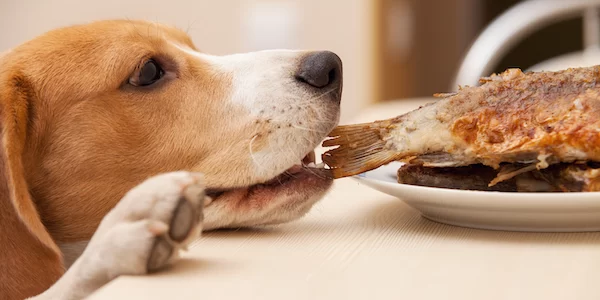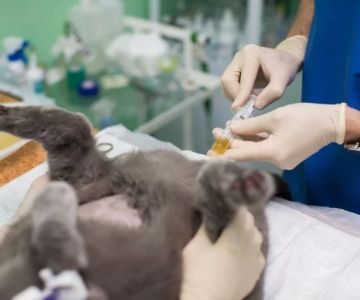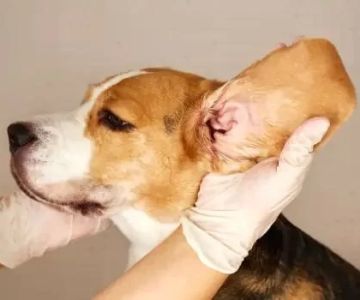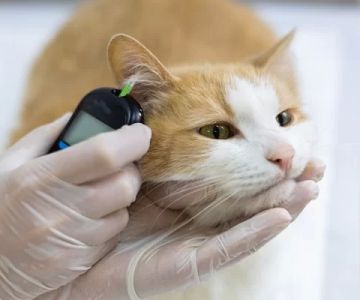How to Train a Dog to Be Calm Around Food: A Step-by-Step Guide
When I first adopted my dog, Max, I quickly realized he had a strong interest in food—especially when it came to mealtime. Whether it was during dinner prep or when I was enjoying a snack, Max would get incredibly excited, jumping, whining, and even trying to grab food from the counter. While this behavior was cute at first, I soon realized that it was becoming problematic, not only because it was disruptive but also because I didn’t want Max to develop bad habits around food. That’s when I decided it was time to train him to be calm around food. In this article, I’ll share the methods that helped me teach Max to remain calm and well-behaved during mealtime.
1. Understanding Why Dogs Get Excited Around Food
Before diving into the training process, I needed to understand why Max—and many other dogs—get excited around food in the first place. It turns out that dogs have a natural instinct to guard and protect resources, including food. In the wild, this behavior helped ensure that they received enough nutrition to survive. For domesticated dogs, however, this instinct often manifests as excitement or even aggression around food, especially if they are uncertain about when or how they will get their next meal.
In Max’s case, his excitement was a mix of hunger, anticipation, and a strong attachment to food. He would often jump around the kitchen, barking, or even sniffing at the counters. This behavior wasn’t just limited to mealtime; Max would also get excited if there were food scraps on the floor or if anyone in the house was eating. Understanding that his behavior was rooted in instinct and excitement helped me realize that the key to changing this behavior was to offer Max more structure and consistency around food.
2. Creating a Calm Environment for Feeding
One of the first steps in training Max to be calm around food was to establish a calm environment before feeding time. I noticed that his excitement escalated as soon as he saw me preparing food. The sight and smell of food triggered his instincts, which made it even harder for him to calm down. So, I started by setting a routine. Each day, I would prepare Max’s meals at the same time and place, and I made sure to avoid giving him attention or treats while I was doing so. This helped Max understand that food preparation wasn’t a time for excitement or chaos.
I also made sure that his eating area was quiet and free of distractions. Initially, I’d walk away from the food bowl to allow Max to settle before I placed his meal down. I noticed that by giving him a few seconds of space, he learned that rushing or jumping wouldn’t result in getting the food any faster. Once he was calm, I would place the food bowl on the floor. By doing this consistently, Max started to associate calmness with food, which was a huge step in training him to be more composed during mealtime.
3. Teaching the “Sit” Command Before Meals
One of the most effective techniques I used to train Max was the “sit” command. This is a fundamental obedience command that helps dogs stay focused and calm. I began incorporating the “sit” command into Max’s mealtime routine. Before placing his food down, I would ask him to sit and wait patiently. In the beginning, he would struggle to remain seated, often standing up or jumping around as I got closer to his food bowl. I would calmly ask him to sit again, rewarding him with a treat or praise each time he complied.
It took some time, but eventually, Max began to associate sitting with the reward of food. I made sure to reinforce this behavior by rewarding him only when he was calm and sitting. By the time I placed his bowl on the ground, Max was trained to remain in a calm sitting position, waiting for my cue to eat. This routine not only helped him remain calm but also reinforced the idea that patience and good behavior lead to positive outcomes.
4. Using Positive Reinforcement to Reward Calm Behavior
Positive reinforcement was key in teaching Max to stay calm around food. Every time Max exhibited calm behavior, such as sitting quietly or waiting for my cue, I rewarded him with praise, treats, or affection. Positive reinforcement helps dogs understand that calmness and patience lead to positive outcomes, while impulsive or excitable behavior does not. I made sure to catch Max being calm and reinforce it with a reward, which helped him learn what was expected of him.
Another way I reinforced calm behavior was by using treats and rewards during training sessions. I would practice the “sit” command multiple times a day, whether it was before meals, during playtime, or even while walking. By associating calmness with treats, Max started to relax when food was involved. Over time, the rewards became less frequent, and Max began to exhibit calm behavior more naturally, especially when food was around.
5. Managing Begging and Food Stealing
Begging and food stealing were also problems that I had to address during Max’s food training. Initially, Max would beg for food during family meals or try to sneak scraps off the counter when I wasn’t looking. I knew that allowing this behavior to continue would undermine my training efforts. To address this, I made sure that Max had a designated eating area where he was not allowed to beg or scavenge for food. Whenever he tried to beg, I would gently redirect his attention and ask him to lie down in his spot.
I also used a technique called “crate training” when Max was younger. During family meals or when I was preparing food, I would place Max in his crate with a chew toy or a treat to keep him occupied. This helped prevent begging and food stealing while reinforcing the idea that mealtime was for humans and that Max should focus on his own food. As Max grew older, I phased out the crate and allowed him to remain in the room, but I continued to redirect his attention when he began to show signs of begging.
6. Addressing Resource Guarding Behavior
One issue that many dog owners face when training their dogs to be calm around food is resource guarding, a behavior in which a dog becomes protective or possessive over food. I noticed that Max would occasionally growl or snap when I tried to take his food bowl away, especially when he was really hungry. This behavior can be dangerous, so I worked on addressing it early on.
To combat resource guarding, I used a gradual desensitization technique. While Max was eating, I would occasionally approach his food bowl and add a little more food, rewarding him with praise or a treat when he remained calm. Over time, Max learned that my approach didn’t mean his food would be taken away, and he stopped showing signs of aggression. This method of positive reinforcement helped Max feel more secure during meals and reduced his guarding behavior.
7. Consistency Is Key
The most important lesson I learned while training Max to be calm around food was the importance of consistency. Consistent routines, commands, and positive reinforcement were key to reinforcing good behavior. Whether it was during mealtime or outside of food-related situations, I made sure to maintain the same level of consistency in my interactions with Max. Dogs thrive on routines, and the more I stuck to the same process, the faster Max picked up on the expected behavior.
Training Max took time and patience, but the results were well worth it. Today, he’s much calmer around food and understands that waiting for his cue leads to a rewarding experience. If you’re facing similar challenges with your dog, I encourage you to stick with the training process and remain patient. With the right approach, you’ll see positive results, and your dog will learn to enjoy food time in a calm, composed manner.











